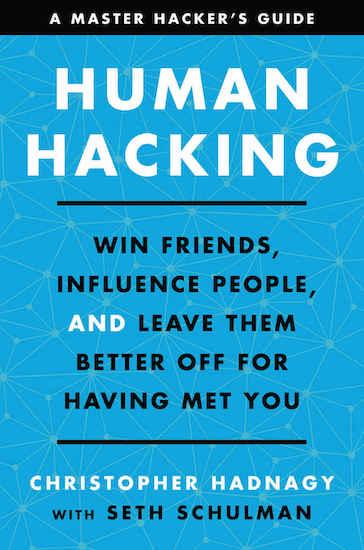Podcast #680: Influence and Persuade Through Human Hacking
Description
When we think of hacking, we think of a tech-savvy dude breaking into computer systems to steal data. But hackers can also take the form of “social engineers” who get what they want by building rapport and penetrating psychological defenses.
My guest is an expert and pioneer in the area of human hacking, and shows individuals and companies the weaknesses of their security systems by breaking into their offices and computers, not by bypassing pass codes and firewalls, but simply by walking in the front door, and knowing how to ask for and receive access from the humans who run the show
His name is Chris Hadnagy, and he’s the author of Human Hacking: Win Friends, Influence People, and Leave Them Better Off for Having Met You, which takes the social engineering principles con men and malicious social hackers use to breach security systems and steal data, and shows the average person how to use them for positive ends in their personal and professional relationships. Today on the show, Chris shares how assessing which of four styles of communication someone prefers can help you better connect with them, why you should approach every interaction knowing your pretext, the keys for building rapport, and the difference between manipulation and influence. We end our conversation with tips on the art of elicitation — how to get information from someone without directly asking for it.
If reading this in an email, click the title of the post to listen to the show.
Show Highlights
- What is human hacking?
- Using the DiSC assessment to figure out which of 4 types of communicator someone is
- Using “pretexting” to decide how to approach a conversation
- How to build rapport with others
- How to influence, persuade, and have hard conversations with your kids
- Why offering choices leads to greater compliance
- The difference between manipulation and influence
- How to get information from someone without asking for it directly by having an “elicitation conversation”
- Why it’s helpful to outline a conversation before having it
Resources/Articles/People Mentioned in Podcast
- Con man Victor Lustig, who tried to sell the Eiffel Tower
- AoM interview with former con man turned security consultant Frank Abagnale
- Why People Do (Or Don’t) Listen to You
- Lessons in Building Rapport From Experts in Terrorist Negotiation
- How to Build Instant Rapport
- DiSC assessment
- AoM’s interviews with former FBI agent Robin Dreeke on the code of trust and the 6 signs to look for when sizing someone up
- The Charismatic Man: The 3 Elements of Personal Magnetism
- How to Become a Good Listener
- How to Design Conversations That Matter
Connect With Chris
Listen to the Podcast! (And don’t forget to leave us a review!)


Listen to the episode on a separate page.
Subscribe to the podcast in the media player of your choice.
Listen ad-free on Stitcher Premium; get a free month when you use code “manliness” at checkout.
Podcast Sponsors
Click here to see a full list of our podcast sponsors.
Read the Transcript
Brett McKay: Brett McKay here and welcome to another edition of The Art of Manliness podcast. Now when we think of hacking, we typically think of some tech-savvy dude breaking into computer systems to steal data. But hackers can also take the form of social engineers. Individuals who get what they want by building rapport and penetrating psychological defenses. My guest today is an expert and a pioneer in the area of human hacking. He makes his living showing companies the weaknesses of their security systems by breaking into their office and computers, not by bypassing pass codes and firewalls, but simply by walking in the front door and knowing how to ask for and receive access from the humans who run the show.
His name is Chris Hadnagy, and he’s the author of Human Hacking: Win Friends, Influence People, and Leave Them Better Off for Having Met You. In this book, he takes the social engineering principles con men and malicious social hackers use to breach security systems and steal data and shows the average person how to use them for positive ends in their personal and professional relationships. Today on the show Chris shares how assessing which of the four styles of communication someone prefers can help you better connect with them. Why you should approach every interaction knowing your pretext. The keys for building rapport. And the difference between manipulation and influence. And we end our conversation with tips on the art of elicitation, which is how to get information from someone without directly asking for it. After the show’s over check out our show notes at aom.is/humanhacking.
Alright Chris Hadnagy, welcome to the show.
Chris Hadnagy: Thank you for having me.
Brett McKay: So you are a hacker. Now, I think when… I think if you grew up in the ’90s like I did, you have this sort of archetypical idea of what a hacker looks like… What they do. So they usually… They’re in a dark room, fiercely tapping at a keyboard in front of a monitor with a black screen with the green fonted code cascading down… Maybe listening to The Prodigy.
Chris Hadnagy: Yeah.
Brett McKay: But that’s not what you do. You do… There is some computer hacking involved, but you primarily hack humans. What is a human hacker?
Chris Hadnagy: That’s great, by the way. I love that image. And don’t forget the Mountain Dew…
Brett McKay: The Mountain Dew, right.
Chris Hadnagy: T









